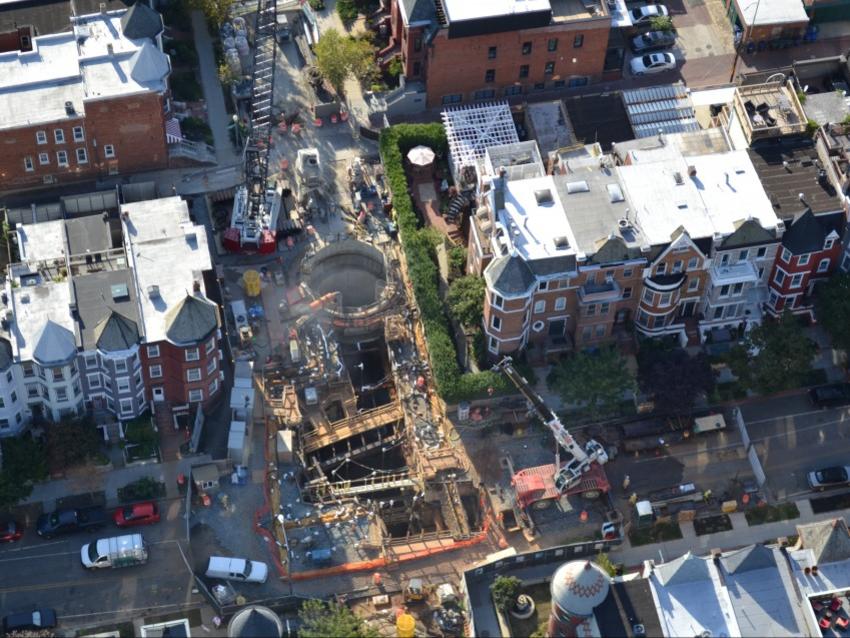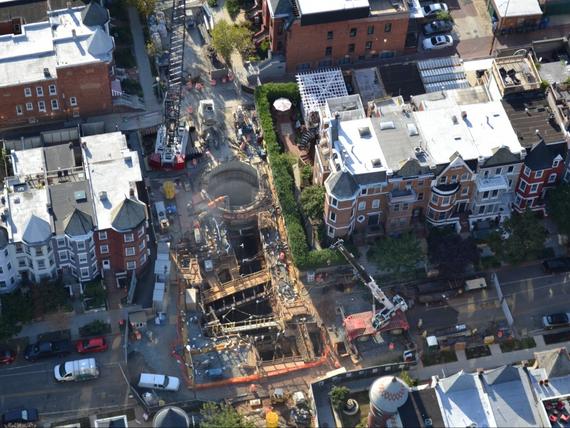Ground freezing on District of Columbia’s Water and Sewer Authority project

The project
The First Street Tunnel work consisted of TBM mining of a 2,700-ft long tunnel, sinking of four large diameter shafts, and construction of three adits, four diversion chambers and other structures. With sufficient space available, the main shaft had been excavated within slurry walls. Keller had installed the deep well system for depressurisation to allow shaft excavation in the dry. The three remaining shafts and adits were situated in considerably more congested areas, requiring an alternative approach to dewatering and excavation support.
The challenge
The impact of noise and construction operations on the area’s residential community was deemed a critical consideration.
The solution
Ground freezing was selected as the best option since it would provide both groundwater control and excavation support in a single operation and could be accomplished with minimal community impact.
Accordingly, Keller’s refrigeration plants were located adjacent to the main shaft. From here, HDPE supply and return brine pipes were run to the other sites via shallow utility trenches over distances from 300ft up to 2,600ft. Key to the ground freezing was integrating all instrumentation in a central mobile office from where operating parameters such as supply temperatures, brine levels, pressure and flow were communicated.
The three shafts were each 23-ft ID and extended to a depth of 90 ft. The ground freezing design called for an average of 28 freeze pipes installed around the perimeter of each shaft, extending into rock at a depth of 160ft for complete water cut-off. The adits ranged from 80 to 100 ft deep. The objective of the shaft freezing operation was to install a 6.5-ft thick collar around each shaft, while the adits were encapsulated within a solid block of frozen soil. Freeze pipes were strategically located and angled where necessary to avoid major utilities and not impede access to adjacent residences. Freeze headers were insulated to prevent freezing the utility trenches.
A total of 331 freeze pipes, equating to 42,500 LF, were installed for the project. Keller’s streamlined and fully automated and computerised instrumentation readily handled the magnitude of the work.
